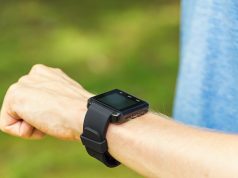Breaks every 30 minutes for five minutes may be enough to improve glycemic responses
By Lori Solomon HealthDay Reporter
THURSDAY, Jan. 12, 2023 (HealthDay News) — Short, regular breaks from sedentary behavior may improve blood glucose and blood pressure measures, according to a study published online Jan. 12 in Medicine & Science in Sports & Exercise.
Andrea T. Duran, Ph.D., from Columbia University Medical Center in New York City, and colleagues examined the acute effects of multiple doses of a sedentary break intervention (light-intensity walking) on cardiometabolic risk factors. Eleven middle- and older-aged adults completed eight-hour conditions on five separate days, including one uninterrupted sedentary (control) condition and four acute (experimental) trials that entailed different sedentary break frequency/duration combinations: every 30 minutes for one minute; every 30 minutes for five minutes; every 60 minutes for one minute; and every 60 minutes for five minutes.
The researchers found that glucose incremental area under the curve was significantly attenuated only for the intervention with a break frequency/duration combination of every 30 minutes for five minutes. There were significant net decreases observed in systolic blood pressure from baseline for all sedentary break doses versus control. The interventions with break frequency/duration combinations of every 60 minutes for one minute and every 30 minutes for five minutes yielded the largest reductions in systolic blood pressure (−5.2 mm Hg and −4.3 mm Hg, respectively).
“What we know now is that for optimal health, you need to move regularly at work, in addition to a daily exercise routine,” a coauthor said in a statement. “While that may sound impractical, our findings show that even small amounts of walking spread through the work day can significantly lower your risk of heart disease and other chronic illnesses.”
Copyright © 2022 HealthDay. All rights reserved.








